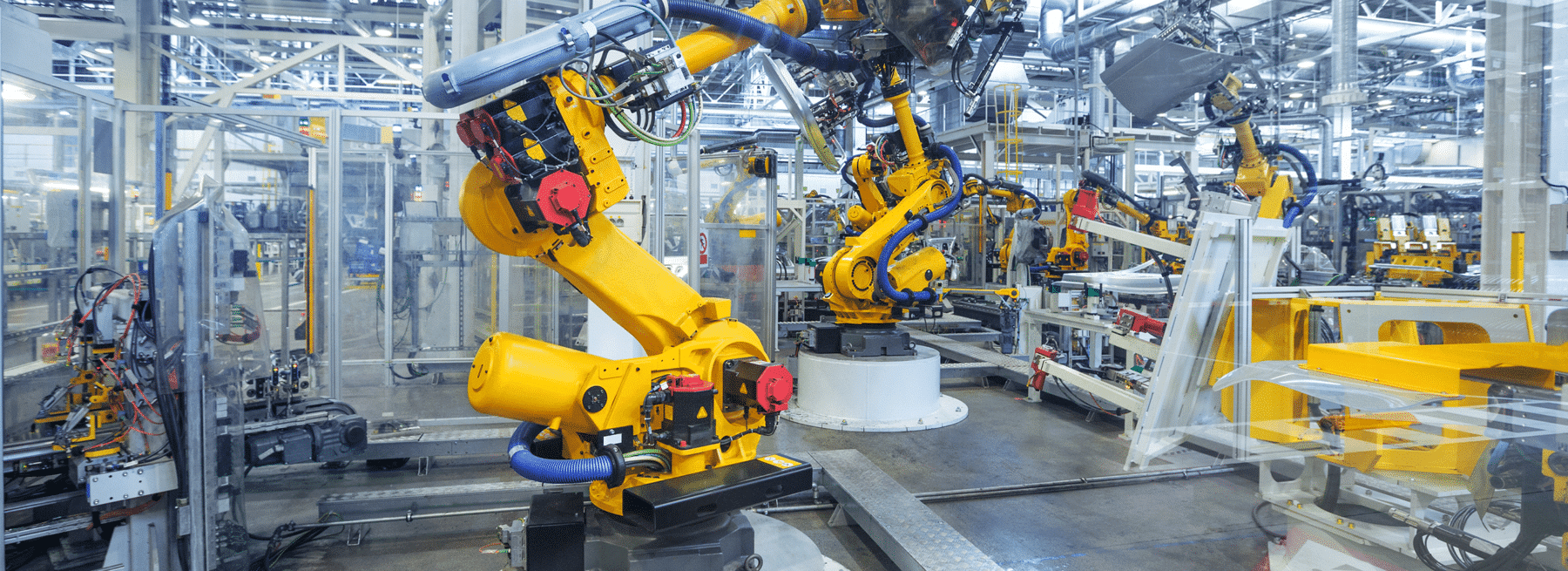When it comes to manufacturing, many people think of rundown places with outdated technology. They believe their processes are a relic from the past. Nothing can be further from the truth. A Forbes article confirms this as it states: “The American industrial economy has long been ‘underappreciated, undervalued and misunderstood.'”
What’s happening is something called the “titanium economy.” Manufacturing companies have current technologies. They’ve built a culture of continuous process improvement to ensure they’re always innovating and finding better ways to operate, be more resilient, and maintain quality and safety.
What is prompting manufacturing to embrace digital transformation and invest in technology? Part of it is by necessity. With inflation showing no signs of slowing down, manufacturing facilities need to be as efficient as possible to ensure profitability. Technology helps make this possible.
The other challenge is employment. This contains two prongs. One is the continuing labor shortage. Part of this stems from the Baby Boomers hitting retirement. Also, fewer people in the younger generation are choosing industrial and manufacturing careers. The other prong is the low unemployment rate, which means there are more open positions.
Together, these put a big strain on staffing in the industrial sector. Therefore, technology enters the picture. The right investments can speed up learning and reduce on-the-job training time. Manufacturing leaders are looking for digital solutions that make jobs easier.
What technologies are trending in the manufacturing sector? Here are the top five trends.
1. Providing Devices to Workers
The younger generations are digital natives. They expect to use technology in all parts of their lives including work. This also includes manufacturing workers. They want end-point devices with the latest digital tools that optimize their productivity. These can be tablets, touchscreens, wearables, augmented reality, and mixed reality.
It’s critical to get their input into how they want to work and what tools will help them be more fruitful. Supplying the workforce with devices could help you attract and retain talent.
2. Taking Advantage of Cloud Technologies
The cloud doesn’t depend on hardware. You can access whatever is in the cloud from almost any connected device. If something pops up, you can address it by using a connected device wherever you are whether you’re at the manufacturing facility, at home, or running errands. You won’t need to drop everything and head to the facility.
An advantage of using the cloud is that it won’t tax your resources like on-premises systems do. Cloud computing can speed processing and require less real estate. You have many options for cloud computing with software as a service (SaaS), infrastructure as a service (IaaS), and platform as a service (PaaS).
SaaS is on-demand access to software hosted in the cloud. A good example of this is Google Workspace and Microsoft 365. Both have docs and spreadsheets that you can create and edit from any connected device. No one has to go to their computer to get the file they need. The file is available simply by logging into a secure, connected device.
An example of IaaS is Amazon Web Services and Microsoft Azure. Many companies use IaaS for their server, storage capacity, and networking needs. The benefit is that the cloud provider is responsible for hosting, managing, updating, and maintaining the hardware and computing resources. Their clients simply pay for the service.
IaaS comes in handy with disaster recovery planning and being ready for sudden spikes in computing resources such as ecommerce websites on Black Friday and Cyber Monday. If the facility uses the Internet of Things (IoT) and artificial intelligence (AI), then IaaS allows them to set up and scale up data story and computing resources as needed.
Finally, platform as a service lets clients build, test, deploy, and update applications faster and more cost-effectively than they would using their own on-premises platform. This speeds up the time to market, reduces risks associated with testing and adopting new technology, and simplifies collaboration.
3. Automating Non-Value-Added Tasks
Many are concerned that robots and artificial intelligence like ChatPGT will replace jobs. The reality is they will work together. Technology can take on repeatable, mundane, and unsafe tasks. This lets workers spend more time on value-added tasks.
An example of this is the autonomous mobile robot (AMR). They rely on sensors, machine learning, and artificial intelligence to navigate the facility. AMRs can do cleaning and disinfecting, transport unsafe objects, carry heavy loads, or pick, sort, and place objects.
Voice picking and visual picking do a lot of the repetitive work that can lead to repetitive stress injuries (RSI). In fact, the U.S. Bureau of Labor Statistics’ TED: The Economics Daily reveals that musculoskeletal disorders also known as ergonomic injuries are the No. 1 nonfatal workplace injury resulting in days away from work as there were 47,280 cases over a 12-month period.
For voice picking, the worker wears a headset and gives voice commands. They can use the business systems and pick lists without using their hands. This reduces injuries, increases productivity, shaves training time, and lowers human errors according to Almasons.
As for visual picking, users wear augmented reality headsets. They can see picking instructions, quantities, and where to put items. This allows them to work faster and without stressing their hands.
Industrial companies use virtual reality, augmented reality, and mixed reality to enhance training. Workers can learn new skills without the risk. A trainer or a coach can communicate with them through the headset without being onsite. This improves safety.
4. Using Video Surveillance with Remote Monitoring
Video surveillance as a service (VSaaS) is an option, but it’s generally not recommended because it puts data in the public cloud. The manufacturing facility would not have 100% control over it. A more effective and secure option is to work with a security vendor that has a private cloud.
Video surveillance with remote monitoring comes with built-in layers of security. The sight of security cameras is a deterrent, but not 100% with more brazen criminals making the news. Thus, another layer of security is the trained monitoring operator. However, watching many monitors all day can be a mind-numbing task. This is repetitive. Automation can carry that load and that’s what video analytics do.
When you pair humans with video analytics, you essentially have two brains working together. The data from analytics scours the videos for any one of many programmed scenarios. When it recognizes one, it alerts the human operator.
The trained monitoring operator has multiple actions they can take. They may call the contact at the manufacturing facility to report a problem like a safety hazard. A second possibility is to issue an audio warning to the intruder at the manufacturing facility from an onsite speaker. The operator is not at the facility. They’re communicating with the trespasser from a safe remote location.
If the situation warrants bringing in law enforcement, then the security professional can contact local authorities and report what’s happening. They can continue observing what’s happening until the police reach the facility. Anytime law enforcement arrives after the suspect escapes, you’ll have footage to help catch the intruder.
This can help with the investigation and potential arrest. The footage gives you the evidence you need for criminal cases, liability lawsuits, and more.
The pairing of the operator and video analytics is more powerful than a traditional security system because it’s proactive. Together, they can help deter crime and minimize damage.
Video cameras without humans and technology are simply eyes without a brain. When you add human and tech brains, you level up video surveillance to help catch things before anything happens.
Manufacturing values looking for productivity gains. Video surveillance can help with that. The video cameras with their bird’s eye views can help spot production bottlenecks, safety hazards, and areas of improvement. Companies investing in remote video surveillance can experience increases in productivity, profits, and safety.
You can incorporate video surveillance with an access control system. This creates an integrated security system that delivers a fast return on investment as the next trend explains. Remote video surveillance does more than catch criminals. It helps avert crime, decrease safety risks, and boost productivity.
5. Integrating an Access Control System
Access control systems simply manage who has access to what. A huge benefit is that you can grant and revoke access from anywhere using a connected device. Access control systems are customizable, flexible, and scalable.
Access control can manage access to the manufacturing facility as well as the parking garage. You can grant access to specific off-limit rooms. Some can grant access based on a time frame.
With the right access control system, keys become a thing of the past. You won’t have to worry about people being locked out or forgetting their keys. If someone is on their way to the facility and you’re on the other side of town, it’s no problem. You can grant them access using your connected device. If you have multiple facilities, you can manage all of the sites from a single dashboard.
How to Select the Right Manufacturing Technology
Where do you start in finding the right manufacturing technology? Every facility is different as it depends on its budget, requirements, operations, and property layout. Start by contacting technology vendors who have experience in manufacturing.
If you’d like to learn more about manufacturing security, please contact us.
Texas Private Security License Number: B14187.

